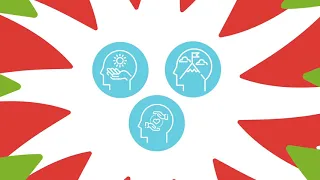Taking Extra Pre-Cautions, Practicing Social Distancing, Stocking Up on Diabetes Friendly Foods and Staying Active Are Just A few Of Our Recommendations for Diabetes Patients.
According to the Centers for Disease Control and Prevention (CDC) older adults who have chronic medical conditions including diabetes are at higher risk for severe illness from COVID-19. Chronic diseases can compromise the immune system and make people more vulnerable to serious complications. That’s why it’s so important for people with diabetes who are at high risk take extra precautions during this time. Our team of expert medical doctors, coaches and nurses have compiled your questions and prepared answers to help you take the necessary pre-cautions during this time.
Managing Your Diabetes During COVID-19
Q: I have diabetes. Am I more at risk of getting COVID-19?
A: There is not enough data to show that people who have diabetes are more at risk of getting COVID-19, however, if someone has a serious underlying condition, such as diabetes they are at a higher risk of having complications if they become sick with coronavirus.1
To help keep yourself healthy and safe during this time we suggest taking every day pre-cautions;
- Keeping a safe space between yourself and others around you.
- Avoiding contact with those who are sick.
- Avoid crowds as much as possible.
- Wash your hands often. The CDC suggests washing your hands for up to 20 seconds. If you do not have access to soap and water, you can use an alcohol-based hand sanitizer.
- Wipe down highly trafficked areas of your home including, counter tops, door handles, and light switches.
Q: Will COVID-19 impact my access to insulin and other supplies?
A: Currently leading manufacturers are reporting that COVID-19 is not impacting access to insulin.2 The American Diabetes Association is continuing to monitor access to insulin and providing updates. You can find updates at Insulinhelp.org.
Q: How can I manage my diabetes while I practice social distancing?
A: It is recommended that someone with diabetes plan what to do if they become ill during the COVID-19 pandemic;
- Make sure to have an adequate stock of medications and supplies for monitoring blood glucose at home.3 If possible, take advantage of having prescriptions delivered to your home.
- Continue to manage your nutrition. Eating a well-maintained diet is critical to your diabetes management and keeping your immune system strong.4 While you are home, we suggest;
- Sticking to your diet and preparing a meal plan that includes your healthy carbohydrates, fiber rich foods, and good fats. You can create a sample menu for breakfast, lunch, snacks, and dinner to help you stay on track.5
- Take advantage of home delivery services if possible.
- Being home all day can mean feeling the urge to snack, try to stick to a routine and eat your meals and snacks at structured times.
Q: How can I stock up my kitchen with diabetes friendly foods?
A: When planning meals, avoid trans fats, saturated fats, foods with high amounts of sodium or cholesterol.
- Try to avoid canned vegetables with lots of added sodium.
- During the pandemic you may feel the need to have foods that won’t perish easily. Some suggestions are; 6
- Frozen vegetables
- Dry kidney beans, black beans, pinto beans, and garbanzo beans.
- Salt free seasonings.
- Whole grains such a quinoa, brown rice, and whole oats.
- Healthy fats such as assorted nuts and peanut or almond butter.
- Canned tuna.
- Healthy eating is very important for managing your diabetes. Visit the CDC for some resources on healthy eating and cooking for people with diabetes.
Q: I am not feeling well, what should I do?
A: Even if your blood sugar is within your target level, you should practice the “sick day” guidelines suggested by the CDC;7
- Continue taking your diabetes pills or insulin as usual.
- Test your blood glucose every four hours and keep track of the results.
- Monitor your ketone levels.
- Drink plenty of calorie free fluids. It is suggested that you drink 4 to 6 ounces every half hour to prevent dehydration.
- Try to eat as you normally would.
- Weigh yourself every day. Losing weight without trying is a sign of high blood glucose.
- Check your temperature every morning and evening. A fever may be a sign of infection.
You should call your doctor if;8
- Your symptoms worsen
- You have moderate to high ketone levels in your urine.
- You lose 5 pounds or more during the illness.
- Your blood glucose is lower than 60 mg/dl or remains over 250 mg/dl on 2 checks.
- You feel tired or can’t think clearly. If you cannot think clearly or are tired have someone else call your doctor or bring you to the emergency room.
- Your temperature is over 101 for more than 24 hours.
Q: How can I stay active while I am at home?
A: Daily physical activity is an important part of diabetes management. There are several ways you can stay active while self-quarantining at home. Make sure to adapt your routine and work out intensity to your fitness level;9
- Stretching exercises such as yoga.
- Body weight exercises including pushups, squats, stationary lunges, jumping jacks, and sit-ups.
- Take a walk. Make sure to practice social distancing while doing so. 6-feet apart is recommended.
- If you have a stationary bike or treadmill in your home;
- A one hour walk on the treadmill
- Two 15-minute intervals on the stationary bike.
- Use light weights, kettle bells, or workout bands for a total body workout.
- Staying physically active is very important for managing your diabetes and maintaining a healthy weight. Visit the CDC for some resources on being physically active for people with diabetes.
References:
[1] American Diabetes Association. https://www.diabetes.org/coronavirus-covid-19. Accessed March 23, 2020.
[2] American Diabetes Association. https://insulinhelp.org/. Accessed March 23, 2020.
[3] International Diabetes Federation. shorturl.at/vwACV. Accessed. March 23, 2020.
[4] Harvard School of Public Health- https://www.hsph.harvard.edu/nutritionsource/2020/03/25/food-safety-nutrition-and-wellness-during-covid-19/. Accessed March 24, 2020.
[5] Mayo Clinic. https://www.mayoclinic.org/diseases-conditions/diabetes/in-depth/diabetes-diet/art-20044295. Accessed March 24, 2020.
[6] WebMD. https://www.webmd.com/diabetes/features/stock-your-kitchen-for-diabetes-health#1. March 25, 2020
[7] Center for Disease Control and Prevention. https://www.cdc.gov/diabetes/managing/flu-sick-days.html. Accessed March 23, 2020.
[8] Center for Disease Control and Prevention. https://www.cdc.gov/diabetes/managing/flu-sick-days.html. Accessed March 23, 2020.
[9] International Diabetes Federation. https://www.idf.org/aboutdiabetes/what-is-diabetes/covid-19-and-diabetes/home-based-exercise.html. Accessed March 24, 2020.





